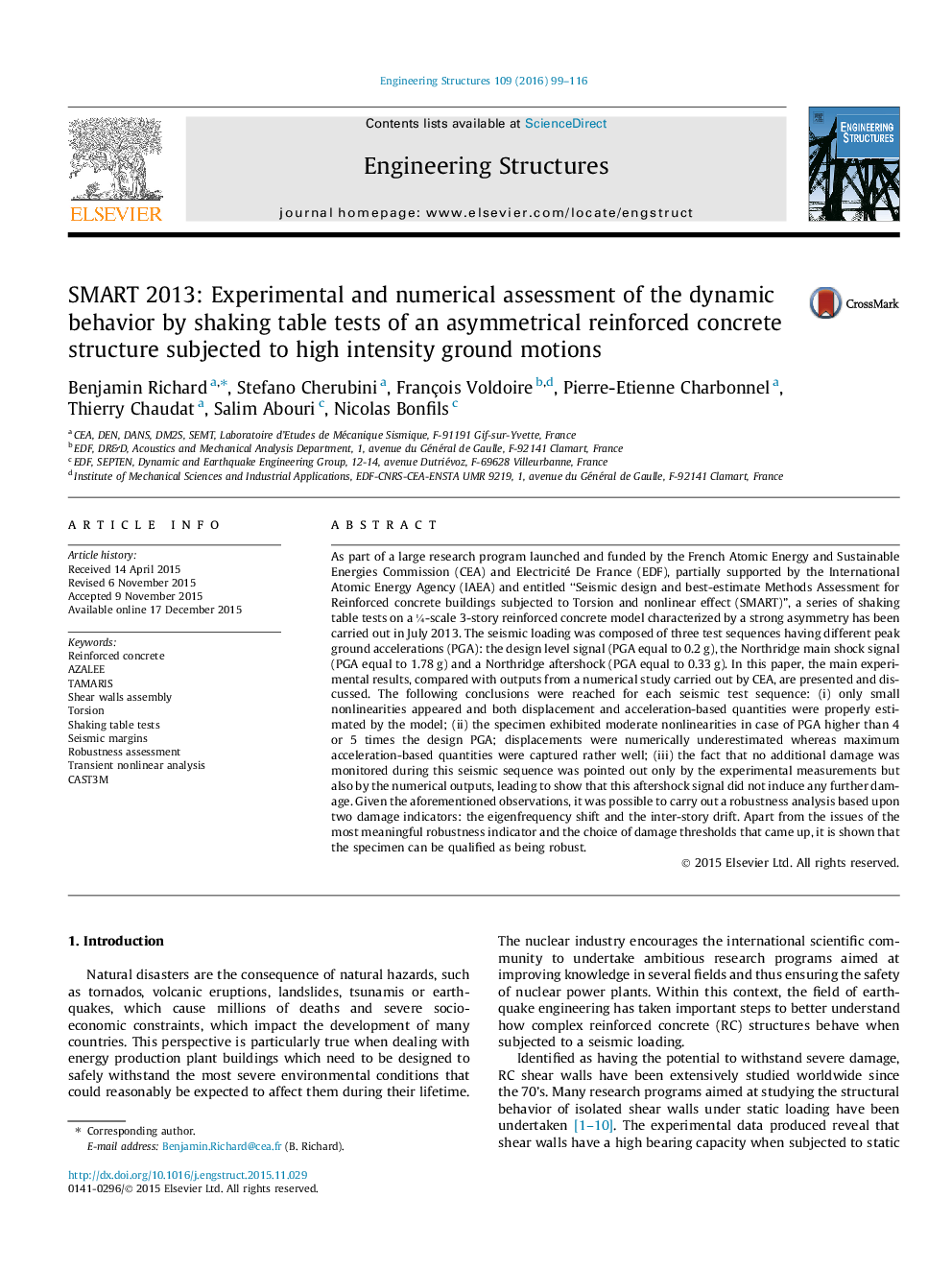| Article ID | Journal | Published Year | Pages | File Type |
|---|---|---|---|---|
| 265926 | Engineering Structures | 2016 | 18 Pages |
•The seismic behavior of an asymmetric RC nuclear structure is analyzed by means of shaking table tests.•Experimental results confirm both the existence of seismic margins and the robustness of the structure.•The numerical model provides results that are in satisfactory accordance with the experimental ones.
As part of a large research program launched and funded by the French Atomic Energy and Sustainable Energies Commission (CEA) and Electricité De France (EDF), partially supported by the International Atomic Energy Agency (IAEA) and entitled “Seismic design and best-estimate Methods Assessment for Reinforced concrete buildings subjected to Torsion and nonlinear effect (SMART)”, a series of shaking table tests on a ¼-scale 3-story reinforced concrete model characterized by a strong asymmetry has been carried out in July 2013. The seismic loading was composed of three test sequences having different peak ground accelerations (PGA): the design level signal (PGA equal to 0.2 g), the Northridge main shock signal (PGA equal to 1.78 g) and a Northridge aftershock (PGA equal to 0.33 g). In this paper, the main experimental results, compared with outputs from a numerical study carried out by CEA, are presented and discussed. The following conclusions were reached for each seismic test sequence: (i) only small nonlinearities appeared and both displacement and acceleration-based quantities were properly estimated by the model; (ii) the specimen exhibited moderate nonlinearities in case of PGA higher than 4 or 5 times the design PGA; displacements were numerically underestimated whereas maximum acceleration-based quantities were captured rather well; (iii) the fact that no additional damage was monitored during this seismic sequence was pointed out only by the experimental measurements but also by the numerical outputs, leading to show that this aftershock signal did not induce any further damage. Given the aforementioned observations, it was possible to carry out a robustness analysis based upon two damage indicators: the eigenfrequency shift and the inter-story drift. Apart from the issues of the most meaningful robustness indicator and the choice of damage thresholds that came up, it is shown that the specimen can be qualified as being robust.
